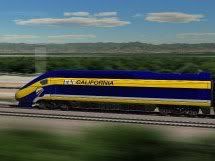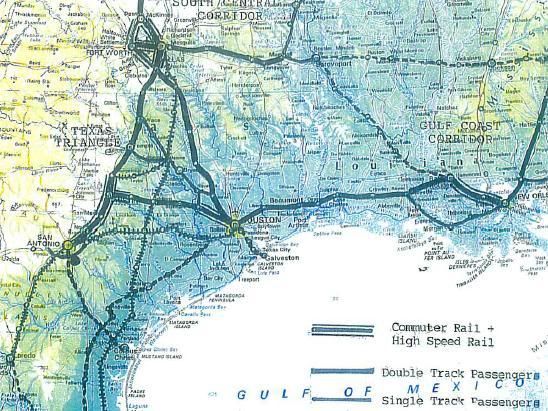Burning the Midnight Oil for Living Energy Independence
 I saw this story a couple of weeks ago, but between the happenings in California and some unanswered questions I had, I haven’t mentioned it yet. Florida East Coast Industries plans Miami-Orlando passenger service by 2014:
I saw this story a couple of weeks ago, but between the happenings in California and some unanswered questions I had, I haven’t mentioned it yet. Florida East Coast Industries plans Miami-Orlando passenger service by 2014:
Passenger train service between Miami and Orlando could begin as early as 2014 under a plan announced Thursday by Florida East Coast Industries.
The new “All Aboard Florida” service, which would be privately owned and operated, would offer frequent, regularly scheduled daily trains geared to business travelers and tourists. The Miami-Orlando trip by rail would take three hours, about the same time it takes by car via Florida’s Turnpike.
There would be four stops: Miami, Fort Lauderdale, West Palm Beach and Orlando, each with connections to airports, seaports and existing rail systems such as Tri-Rail and Metrorail. The trains would run on existing FEC tracks that stretch along the east coast from Miami to Cocoa. Forty miles of new track would link Cocoa to Orlando.
Well, waddya know ~ a Passenger Train that Rick Scott can’t kill. More about the Miami/Orlando Train, below the fold.

 As I mentioned in last week’s Sunday Train, the California HSR Authority came out with a revised draft Business Plan.
As I mentioned in last week’s Sunday Train, the California HSR Authority came out with a revised draft Business Plan. The headlines out of California indicate that there has been a substantial shift in terms of the California HSR system. In particular, it seems that Gov. Brown has waded into the fray and is reframing the issue from the Only-An-Infrastructure-Geek-Could-Love frame of the Initial Construction Segment and the mythical “Train to Nowhere”, to the “when do I get to ride it?” frame of the Initial Operating Service.
The headlines out of California indicate that there has been a substantial shift in terms of the California HSR system. In particular, it seems that Gov. Brown has waded into the fray and is reframing the issue from the Only-An-Infrastructure-Geek-Could-Love frame of the Initial Construction Segment and the mythical “Train to Nowhere”, to the “when do I get to ride it?” frame of the Initial Operating Service. Nearly a month ago, Yonah Freemark had a post at
Nearly a month ago, Yonah Freemark had a post at  Yeah, OK, its not Sunday, but I got called on Saturday morning after a Friday night class to substitute for a colleague, and that threw me off completely. Fortunately for the Sunday Train, I am massively underemployed, so there is Monday afternoon available to finish composing what I been thinking about this week.
Yeah, OK, its not Sunday, but I got called on Saturday morning after a Friday night class to substitute for a colleague, and that threw me off completely. Fortunately for the Sunday Train, I am massively underemployed, so there is Monday afternoon available to finish composing what I been thinking about this week. There has recently been a flurry of activism regarding regulatory approval of the “XL Pipeline” in support of bitumen production from Canadian Tar Sands. This is an issue that has attracted substantial attention from a variety of bloggers ~ the
There has recently been a flurry of activism regarding regulatory approval of the “XL Pipeline” in support of bitumen production from Canadian Tar Sands. This is an issue that has attracted substantial attention from a variety of bloggers ~ the  Yonah Freemark at his site
Yonah Freemark at his site  Back in the 90’s, Texas tried to get an Express HSR system off the ground (that is, a bullet train system somewhere in the 125mph to 220mph range) with the “Texas Triangle” project.
Back in the 90’s, Texas tried to get an Express HSR system off the ground (that is, a bullet train system somewhere in the 125mph to 220mph range) with the “Texas Triangle” project.  OK, now, thanks to John Kasich, we are not going to get started on that Rapid Rail HSR network before 2015. Indeed, Democrats would probably have to take back one of the two Chambers of the State Legislature to be able to hit the ground running on getting that Rapid Rail HSR network going in 2015.
OK, now, thanks to John Kasich, we are not going to get started on that Rapid Rail HSR network before 2015. Indeed, Democrats would probably have to take back one of the two Chambers of the State Legislature to be able to hit the ground running on getting that Rapid Rail HSR network going in 2015.
Recent Comments